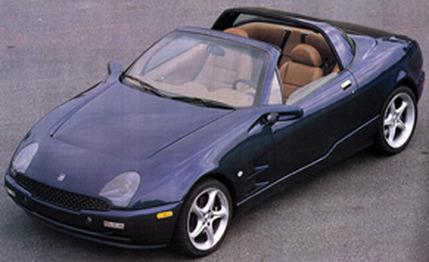
 Road Test
Road Test
There's nothing wrong with Webster's dictionary that couldn't be fixed by including one six-letter word you hear quite a bit while operating a weird car. The word is "huhwha," it is usually posed as a question, and the context is thus:
"Say, man, what is this thing?"
"A Qvale Mangusta."
"Huhwha?"
It's an efficient little term capable of expressing (a) bafflement, (b) the urgent need for clarification, and (c) the concept that if you had only spent the dough on a Porsche, this conversation wouldn't be necessary. A few expert users include a Tennessee trooper in a Jeep Cherokee who slid alongside and asked if the Mangusta was a BMW Z8. Okay, so they all look the same to the fat end of a radar gun, but really!
Later, at 70 mph on the freeway, a Georgia Cadillac driver who excitedly tried to press his door handles into the Mangusta's composite fenders wanted to know if Qvale is "Ford or GM?" Actually, that's a fair question in these days of global consolidation. The Mangusta is definitely more Ford than it is anything else familiar.
Alas, the Qvale isn't a Ford, even though it has a bone-stock Ford SVT Mustang Cobra V-8 under the hood. And it isn't a De Tomaso, either, although it was the last time it appeared in this magazine (May 2000). Before you say "huhwha?" -- it would be improper usage anyway -- let's briefly explain.
Alejandro de Tomaso, the Argentine ex-racer who sired the original 310 Mangusta coupes built between 1966 and 1972, unveiled a car at the 1996 Geneva auto show called the Bigua. Nobody blinked until March 1998, when a San Francisco car dealer named Kjell Qvale (pronounced "shell kah-vah-lee") agreed to pay for its development.
These two patriarchs go way back. Qvale was a Mangusta distributor in the 1960s and later imported Maserati Biturbos and Quattroportes during the dark years when de Tomaso owned the factory. Qvale also owned Jensen for a time and created the 1972-76 Jensen-Healey.
However, the families fell to squabbling over distribution and licensing issues. Just last March, Qvale and his son, Bruce, who manages the carbuilding enterprise, opted to go solo after having plied almost $30 million into the project. What they lost was the halo of de Tomaso's name. What they gained is the experience of hearing "huhwha?" wherever they go in their car, plus a very noteworthy address.
The new Qvale factory on the outskirts of Modena sits in the same broad valley between the Apennines and the Ligurian Alps that is to sports cars what Wisconsin is to butterfat. The Qvales figure people will view the Mangusta's $84,200 asking price more favorably if the car is screwed together in Enzo Ferrari's ZIP Code instead of an Oakland warehouse. Of course, the real challenge is convincing prospects that the Mangusta is more than just a rebodied Mustang and worth the $50,000 premium over a Cobra. Also, that it's a better choice than the similarly priced ragtops from Porsche, Jaguar, and Mercedes they'll have to walk past to get one.
Well, at least it's no rebodied Mustang. Look beyond the Mustang powertrain, the EPA-approved Mustang fuel system, the Mustang steering column, and the Mustang interior bits such as the gauges and switches, and the Mangusta is a bona fide Latin exotic.
For one thing, the lines of the roadster's three-layer molded resin body come from Marcello Gandini, a prominent resident of the aforementioned Italian valley whose doodle pad also produced the Lamborghini Miura and Countach. Note the Mangusta's canted rear-wheel arches, a Gandini trademark. Furthermore, the all-steel, 640-pound chassis is hand-welded from flat sheets and tubes by Vaccari & Bosi, the small Modenese firm that employs the same materials to make similarly constructed undercarriages for Ferrari, Maserati, and Lamborghini.
To some eyes, the Mangusta's high hood line, chunky rocker panels, and bulging fanny straddle it with a bit too much cellulite for a sports car. Closer inspection does reveal elegant details, including the delicate metal screens over the side scoops and taillights, the sculpted venturis in the side mirrors, and the four pipes jutting out the back.